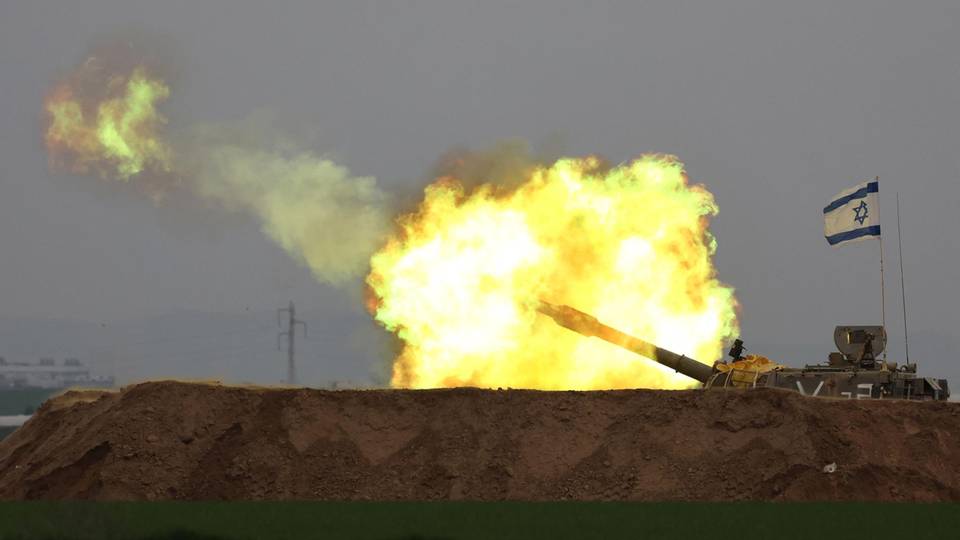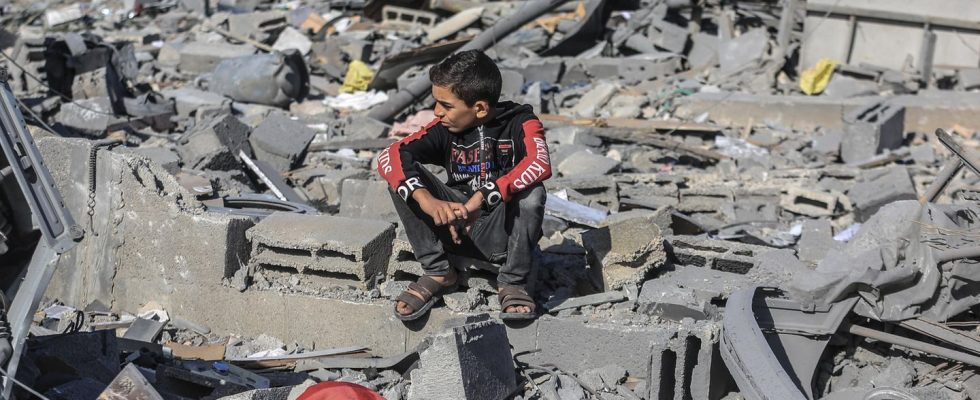There has been war in the Gaza Strip for 100 days. Israel wants to destroy Hamas after the horrific terrorist attack on October 7th. But the Israeli response in the coastal area is worse than anything the Palestinians have experienced before.
After the worst massacre in its history, Israel reduced large parts of the Gaza Strip to rubble in 100 days. According to the Hamas Ministry of Health, more than 23,000 people have been killed so far, around 70 percent of them women and minors. According to UN information, around 360,000 residential units in the Palestinian territory were destroyed or damaged in Israel’s war against the Islamist terrorist organization Hamas. This means that more than half a million of the 2.2 million inhabitants of the coastal area no longer have a home to return to after the war.
In an attempt to describe the extent of the destruction, the comparison between Gaza and Dresden in 1945 comes up again and again. The costs of reconstruction are estimated at the equivalent of more than 46 billion euros. The humanitarian situation in the narrow coastal strip is also catastrophic – but there is no end to the fighting in sight for the time being.PAID InbarLizmi 1230
Has Israel achieved its war goals so far?
According to Israeli war ethics researcher Idit Shafran Gittleman, the government in Jerusalem overpromised the public. The destruction of Hamas and the return of the hostages were promised. “The more time passes, the more the public understands that this fantasy obviously cannot be implemented,” says the expert.
Even more than three months after the massacre on October 7th, in which terrorists from the Islamist Hamas and other Palestinian organizations killed more than 1,200 people in often brutal ways and kidnapped 250 others into the Gaza Strip, 136 people are still being held in the coastal strip. Of the 105 hostages released during a week-long ceasefire in November in exchange for 240 Palestinian prisoners, many describe horrific conditions during their captivity. Meanwhile, the relatives are becoming more and more desperate and their protests are getting louder.
© Ilia Yefimovich
Military expert Ofer Schelach from the Institute for National Security (INSS) in Tel Aviv speaks of Israel’s partial successes. He sees Hamas as the ruling force in the Gaza Strip as already overthrown. “Hamas no longer controls the Gaza Strip,” says Shelach. However, the military threat to Israel from Hamas has not been completely averted. Shelach warns that Israel could “sink” in the Gaza Strip, as it did in southern Lebanon in the years after the 1982 war.
Because of the massive attacks in the Gaza Strip, South Africa has accused Israel of systematically committing genocidal acts before the International Court of Justice. It calls for immediate legal protection for the Palestinians. If the judges were to order an end to military actions, this would put Israel under massive pressure.Gaza Destructions Israel 1540
Hamas leadership trio not yet caught
From Israel’s perspective, it would be a humiliating victory for Hamas if the country had to withdraw before achieving its main goals. The INSS head and former head of military intelligence, Tamir Hayman, says with regard to the Hamas leaders Jihia al-Sinwar, Mohammed Deif and Marwan Issa: “We have not yet managed to eliminate the leadership trio.” The extent of Hamas’s underground tunnel system, where its leadership is hiding, is much larger than Israel expected.

© JACK GUEZ
Hayman expresses concern that Hamas could seize control again if chaos reigns after the war or a weak alternative is installed.
Ask about the day after
This is precisely why the United States has long been pushing for a debate about the “day after” in the Gaza Strip. However, Israel has not yet presented a roadmap that does not conflict with the ideas of its most important allies. The US government wants a reformed Palestinian Authority, based in Ramallah, to take control of the Gaza Strip after the war.
However, the right-wing conservative Israeli Prime Minister Benjamin Netanyahu strictly rejects this. There will be neither a “Hamastan” nor a “Fatahstan” in the Gaza Strip, he said, referring to Hamas and the Fatah organization of the more moderate Palestinian President Mahmoud Abbas, who heads the autonomous authority. Netanyahu accuses Fatah of also inciting terror against Israel. A clear majority of Palestinians are in favor of the armed struggle against Israeli occupation.
Netanyahu insists that Israel will retain security control in the Gaza Strip even after the war ends. He also seeks a permanent Israeli presence on the border between the Gaza Strip and Egypt in order to prevent future arms deliveries to the coastal strip via the Sinai Peninsula. Israel also wants to establish a security zone about one kilometer wide along its border with the Gaza Strip.
Political pressure to repopulate the Gaza Strip
A majority of Israelis now reject a two-state solution. Many fear that rockets from the West Bank could also rain down on Israeli locations in the future. In addition, some argue that an independent state after the unprecedented massacre of October 7th would be a reward.
Far-right members of Netanyahu’s government even want Israel to repopulate the Gaza Strip after the war. Israel withdrew from the area in 2005 and cleared more than 20 Israeli settlements there. Israeli Finance Minister Bezalel Smotrich is now talking about a “voluntary emigration” of the Palestinian population. The USA firmly rejects forced expulsion from the Gaza Strip.

© Abed Rahim Khatib
In view of the catastrophic situation in the Gaza Strip, the USA and other allies of Israel are coming under increasing criticism. US President Joe Biden, who clearly sided with Israel at the beginning of the war, is also losing support among his party’s younger supporters – in the critical election year of 2024.
Rapprochement with Saudi Arabia as an incentive
The USA is now apparently trying to find a regional solution. US Secretary of State Antony Blinken said during his visit to the region that there was still a clear interest from Saudi Arabia in rapprochement with Israel. However, one condition for such an agreement, which would be a huge success from Netanyahu’s perspective, is a “practical path to a Palestinian state.” Hamas’s concerted surprise attack on Israel on October 7 was also seen as an attempt to deal a death blow to the rapprochement. From the perspective of Hamas, the Lebanese Hezbollah and their protecting power Tehran, such an alliance would be to their great disadvantage.PAID Huber_IV_Cohen 1215
Continuing concerns about larger regional war
Since the beginning of the war with Hamas, Israel has also been under massive attack by other forces belonging to the so-called “Axis of Resistance,” which Iran has set up as the arch-enemy of the Jewish state. The Lebanese Shiite militia Hezbollah is engaged in increasingly fierce battles with the Israeli army in the border region. The Houthi rebels in Yemen also attack Israel with rockets and drones and disrupt international shipping trade with regular attacks. On Friday night, the USA and Great Britain responded by attacking Houthi positions in Yemen with the support of the Netherlands, Canada and Bahrain. A statement also supported by Germany justifies the military strike with the right to self-defense. A Houthi representative threatened retaliation.
There is great concern about a gradual escalation into a regional war. When he took office, new Israeli Foreign Minister Israel Katz recently said his country was already “in the middle of a third world war” against Iran and radical Islam.

